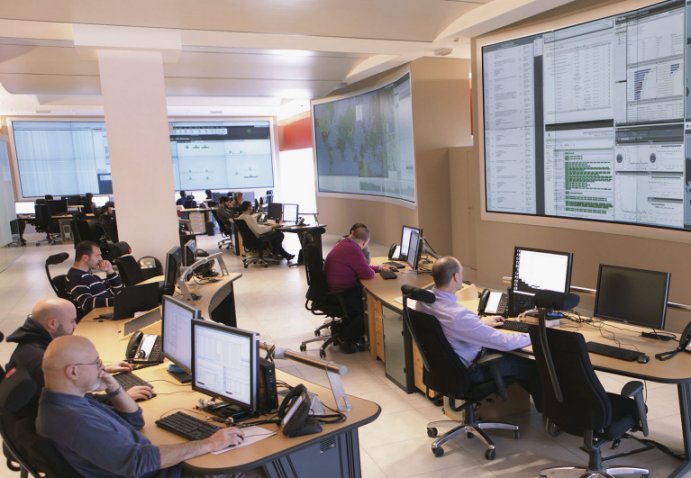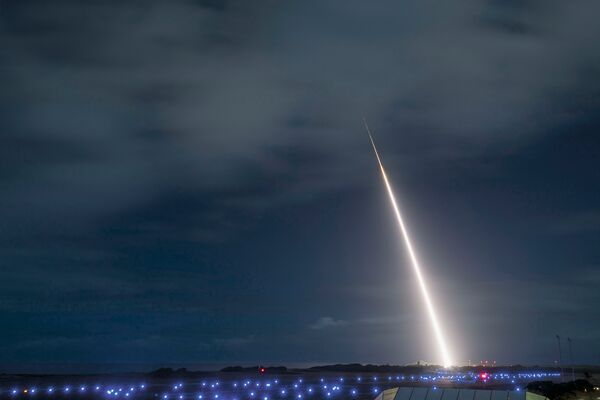- About
- Intara
- Capabilities
- Advisory
- Resources
- News
- Store
Cyber threat intelligence: Industry solutions begin to lean on AI and ML advances
24 October 2019
by Gerrard Cowan
Threat intelligence is an important resource for armed forces in combating cyber threats from a defensive and offensive perspective. Industry is pursuing a range of technological evolutions to bolster the capability, aiming to predict attacks and develop a better understanding of the cyber capabilities and vulnerabilities of individual technology types.
Cyber threat intelligence is particularly complex, with elements tied to predicting and preventing attacks.

Raytheon’s cyber security operations centre. Threat intelligence plays a key role in establishing the potential vulnerabilities of an organisation. (Raytheon)
Threat intelligence is naturally associated with understanding threats and what might motivate an adversary to launch an attack of one kind or another. This may not be technical in nature, but has a technological impact.
On the cyber side, for instance, such intelligence could be used to “operationally predict whether a particular state aggressor might wish to try to do something in cyber space because of something that might be going on at home”, said Ed Gillett, sales director for defence and space at BAE Systems’ Applied Intelligence business line, which works with a range of military customers, most notably the UK Joint Forces Command.


Special Report: China gears up third carrier for more enduring operations despite flight deck flaw
16 May 2024
by Ridzwan Rahmat


Fujian , China's third aircraft carrier, seen here as it departs for its maiden sea trial on 1 May 2024. (VCG via Getty Images)
China has completed the maiden sea trials for its third aircraft carrier, which will be in service as CNS Fujian once it is commissioned. The vessel sailed off from the Jiangnan Shipyard in Shanghai on 1 May and the trials were completed eight days later.
The trials focused on testing the “reliability and stability of the aircraft carrier's propulsion and electrical systems”, read a report from state-owned Xinhua News Agency, which was published to announce the trials.
Fujian was launched by Jiangnan Shipyard in June 2022. While it is slated to be the People's Liberation Army Navy's (PLAN's) third aircraft carrier overall, it is the country's first vessel to be configured for catapult-assisted take-off but arrested recovery (CATOBAR) aircraft operations.
Satellite images that have been analysed by Janes since 2021 support postulations that Fujian is equipped with electromagnetic catapults, given the presence of distinctive features along the track of the aircraft launching system.
BAE touts long-term relevance of Eurofighter to UK
16 May 2024
by Gareth Jennings


Currently scheduled to be retired in 2040, the Eurofighter Typhoon FGR4 could serve the UK as a force multiplier to its higher-end F-35 and Tempest aircraft well beyond that date, BAE Systems says. (Crown Copyright)
BAE Systems has touted the continued relevance of the Eurofighter Typhoon FGR4 to the UK, saying the ‘fourth-generation' combat aircraft can provide much-needed mass and resilience beyond its projected out-of-service date (OSD).
Speaking at the site of the BAE Systems' Warton production facility in northern England on 14 May, Mike Baulkwill, Combat Air Strategy director at the company, said that, with the international Eurofighter operator base set to fly improved and upgraded variants of the type out into the 2060s, the Royal Air Force (RAF) could retain its own aircraft beyond its current 2040 OSD.
“The Typhoon will be relatively enduring, as sometimes you will not want to use your higher-end aircraft [such as the Lockheed Martin F-35B Lightning and/or Tempest] – the Typhoon and the Typhoon Evolution [along with Eurofighter Evolution, the name being given to the Long-Term Evolution [LTE] mid-life refresh standard aircraft now being developed] is in a good place for that,” Baulkwill said.
Japan, US firm up co-operation to develop Glide Phase Interceptor
16 May 2024
by Kapil Kajal


The Standard Missile (SM)-3 Block IIA missile, pictured above launching from the Pacific Missile Range Facility in Hawaii, is jointly developed by the US and Japan. The MDA said the GPI joint development will be pursued in a construct similar to that used for the SM-3. (US MDA)
Japan and the US have firmed up their co-operation to jointly develop a Glide Phase Interceptor (GPI).
According to the Japan Ministry of Defense (MoD), the two countries signed a partnership agreement on 15 May to promote collaboration on research and development of the GPI.
The development of the GPI will be initiated in 2024 and it is scheduled to be completed in the 2030s, the MoD said. The GPI is envisaged to improve Japan's integrated air and missile defence (IAMD) capabilities, and deterrence and response capabilities of the Japan-US alliance, the MoD added.
The MoD said it will work “closely with the US Department of Defense to ensure the success of this joint development, and will strive to strengthen the alliance through joint development”.
Threat intelligence is an important resource for armed forces in combating cyber threats from a defe...
Latest Podcasts
The value of OSINT for intelligence sharing
In this episode Harry Kemsley and Sean Corbett are joined by Phil Ritcheson Ph.D. to discuss why intelligence sharing is now more important than ever. They discuss the growing need for allied and partnership and how by using open sources facilit...
Listen nowJanes Case Studies
Using Janes Intara to build a common intelligence picture: Russian build up on the Ukrainian border
View Case StudyNews Categories
 Security Details
Security Details